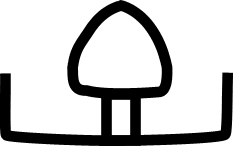Siemens MC91100 citrus press
Siemens MC91100 citrus press
Juicing citrus fruit
Since I also own a twin
gear juicer a citrus press's main function is to speed
up the process of juicing citrus fruit.
It does this in two main ways - by being simpler and easier
to clean - and by eliminating the need to peel the fruit
before juicing.
An obvious downside is that you can only juice citrus fruit
on it. If you want your orange juice mixed with juice from
carrot, ginger and beetroot it's time to use another
machine.
Citrus juice quality
A citrus press is fundamentally a low-RPM device. As such
it won't introduce much froth or air into its juice, won't
heat it up, and won't smash the enzymes in the juice into
pieces.
A citrus press produces a slightly different quality of
juice from the twin gear juicer. It doesn't really attempt
to process the pith - and perhaps it doesn't try quite so
hard to squeeze every last drop of juice out. As a result
there's less froth in the resulting juice and - as a result
of not being forced through such a fine mesh - there are
more intact "juicy bits" in the resulting juice.
Siemens citrus press
The Siemens citrus press produces a good quality of juice.
Its "sieve" stage is reasonably fine and will only let
through relatively small particles.
It spins faster than other citrus presses I've seen - but
probably nowhere near fast enough for the speed to be a
concern regarding damage to the juice.
Construction
The Siemens citrus press comes in (essentially) five separate pieces:
- Base unit with motor;
- Juice collector and spout;
- Reamer and sieve;
- Top cover
- Lid
The base
- The base unit
This seems well designed. The motor seems strong enough to
perform the task. It rotates at a single speed - which seems
about right to me.
The cord storage in the base is neat.
The unit is tall enough to fit a pint glass under the spout
(when it is in the "down" position). I'm inclined to think
that - if anything - the unit is unnecessarily tall - and
that it is unnecessarily wide at the top.
The juice tray
- The juice collector and spout
This seems like one of the admirable innovative features of
the machine. The machine has a retractable spout - which can
be tilted up and town to stem the flow of the juice. This
is useful when peventing the machine from spilling juice
onto the worksurface when the collecting jug is in use.
The way this is implemented was initially suprising to me -
the entire juice-collecting tray tilts backwards and
forwards under the reamer and sieve.
This allows the spout to be a simple open hole - rather than
some sort of tap - which makes it easy to clean and simple
to operate.
My only problem with the implementation of the design is
that the mountings seem to hold the tray in place a
little too enthusiastically.
The reamer
- The reamer
The reamer has eight pronounced ridges. On the photograph
above several of the six vertical supporting struts inside
the reamer are also visible.
The reamer has several distinctive features:
- The top is rounded - rather than tapering to a point -
the curvature at the top is similar to the curvature on a
lime;
- The ridges on the reamer form a slight clockwise screw;
- The reamer seems quite tall and narrow.
The lack of a point at the top and the reduced depth of the
ridges at the top mean that it takes a little longer to
penetrate the fruit - and also that at is less likely to
take out whole chunks. The result seems to be that juicing
is a little slower than with other machines - but that more
juice is extracted.
I think there's room for improvement in the shape of the reamer.
The compelete lack of an upper point seems excessive to me.
Also, the reamer is too narrow at the bottom - you wind up
pressing sides of the fruit against the sides of the reamer
one it a time instead of just pressing down.
The reamer in in competition with the sieve space for base diameter,
but with the current design there is room to spare there.
Does the screw shape perform any useful function? In
principle the angle might help to expell juice more rapidly
by forcing it downwards - and that might speed up the
juicing process. However the screw's mild pitch makes me
suspect its role is currently primarily aesthetic. I would
not rule out the possibility of a more pronounced screw
performing this function more effectively in future
designs.
This juicer's reamer is a "one-size fits all design". This
makes for easy cleaning - and there are no extra parts to
keep track of - but it's not easy to make a single reamer
that works well on limes and grapefruit - and
some compromises are made because of that.
The strainer
- The sieve
This is simple and well-designed. There's a strengthening
ring at the top that produces a slight lip and blunts what
would otherwide be a rapidly rotating sharp edge when
running the machine with the cover off.
The top cover
- The cover
This is the most mysterious - and problematical - component. It
seems designed to perform a range of functions.
The cover:
- ...hides the innards of the machine from sight during operation;
- ...provides protection to the hand from the rotating
innards of the machine;
- ...stops pulp from flying off when centrifuging;
- ...has an outer lip - that catches juice when centrifuging;
- ...uses two central plastic guides (visible above) to
press pulp down onto the strainer - and encourage it to go
under the cover's inner lip;
- ...catches splashes from the fruit while juicing a little
better than the strainer does.
There are two main problems with the cover:
- It's another component to disassemble, wash and reassemble;
- It gets in the way during operation of the machine;
The cover does not seem to me to represent good design.
Since simplicity is so important in such a juicer, I don't think
this component has sufficient reason to exist. It appears that its
role in providing a hand rest would be better played by the
outer edge of the machine. This would need to be moved
closer to the upper edge of the rotating strainer - but the
existing space there is largely wasted. Any role it might play
in protecting the fingers from the rotating elements - or the
pulp on them - seems unnecessary.
I feel that the outer lip's role of catching juice when
centrifuging should be played by the juice tray. Gravity -
and the strainer's upper lip - seem to stop pulp flying out
of the machine when centrifuging well enough.
Pressing pulp down onto the mesh might be a
sensible idea - but apparently the current cover is only
effective at doing that when the tray is very full
of pulp. Juicing three large oranges doesn't produce enough
pulp for this action to actually happen. You can see it
rarely performs a useful function in this role since - after use -
there are few or no marks from juice on the undersides of
the plastic lips. Maybe multiple grapefruit would
In summary, I feel that currently the cover hardly performs
any useful function.
As well as having to be disassembled, washed and reassembled
I found the cover got in the way during juicing - digging
into the base of my hand in an uncomfortable fashion as I
applied downward pressure to the fruit.
The cover does play an aesthetic role - it hides the
machine's innards during operation - but generally, the
approach I would prefer on this front is to make the
machine's innards more beautiful - rather than adding
additional components.
Unfortunately, several factors mean that currently the cover
can't easily be left off. Without it the base of the hand
tends to rest on the rotating strainer. The outer edge of
the machine is higher - but currently too distant to be much
use - and is uncomfortably thin. The machine's lid fits
poorly when the cover is absent.
The lid
- The lid
The lid acts as a dust cover. Like the reamer and sieve
this is made from translucent plastic. The result would not
look out of place next to an iMac.
Some presses allow you to use the lid - or other component -
to apply force to the fruit with. This is not such a machine.
I think this sort of citrus press needs something to press
fruit down onto the reamer with.
I use a small wooden finger bowl when squeezing grapefruit -
and a plastic hemisphere when juicing oranges. I find these
really help. As well as offering the ability to apply force
in more directions easily, they lift my hand up a bit - and
stop me bearing down directly onto the machine.
The plastic hemisphere is the best of my two pressers. It
allows the fruit to rotate slowly within it during
operation - facilitating extracting juice evenly from all
sides of the fruit.
Disassembly, cleaning and reassembly
The machine is pretty easy to clean.
The strainer cn be cleaned pretty effectively even by
rinsing - and a very quick scrub cleans the reamer as
well.
Reassembly is seems slightly easier than disassembly.
Like most juicers, the machine rewards rapid cleaning.
Time is wasted if pulp is left to dry on.
Having said this, there are more components that need
disassembling, cleaning and reassembling than most other
citrus presses.
Additional comments
Is the centrifuge useful? It doesn't produce much in the
way of additional juice. Frankly, it hardly seems worth
pressing the "centrifuge" button most of the time.
My last citrus press ran its motor in opposite directions
alternately - which helped in disturbing the flesh of the
fruit while extracting juice. However this seems to be a
feature that conflicts with having a handed screw thread on
the reamer. Both seem likely to offer rather marginal
benefits. If I was forced to choose I'd probably go for a
screw thread.
Future directions
I'd like to see some developments tried in future citrus presses:
Conclusion
I think this machine produces juice of a slightly
inferior quality to my twin
gear juicer. It is not as efficient at extracting juice
as the twin gear model
either.
However the fact that it is much easier and quicker to operate
means that it is often what tends to get used here when juicing
citrus fruit.
While there are some elements I'm not entirely happy with,
this is definitely the best citrus press I've encountered.
Links
Manufacturer
The Siemens citrus press
Suppliers
|
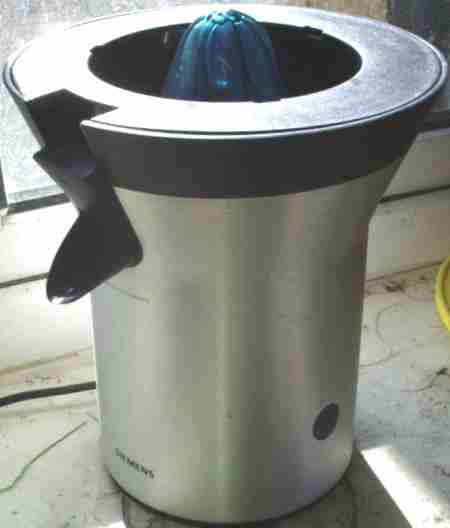


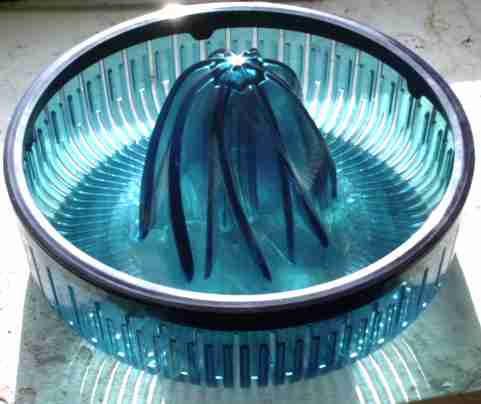
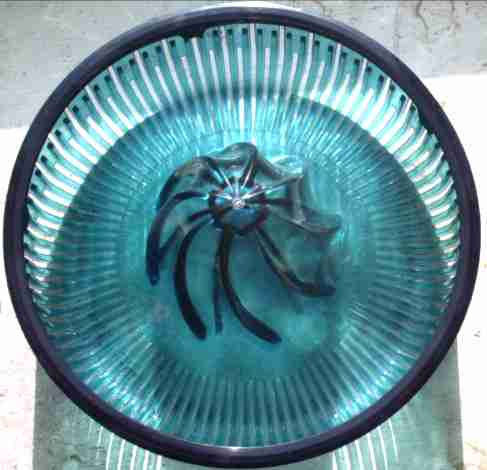

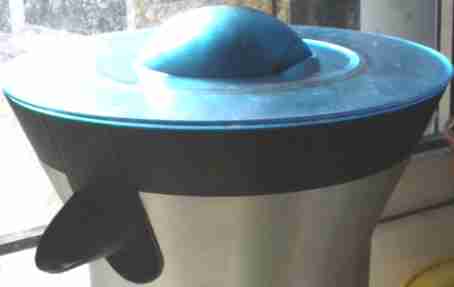
![]](graphics/current.png)
